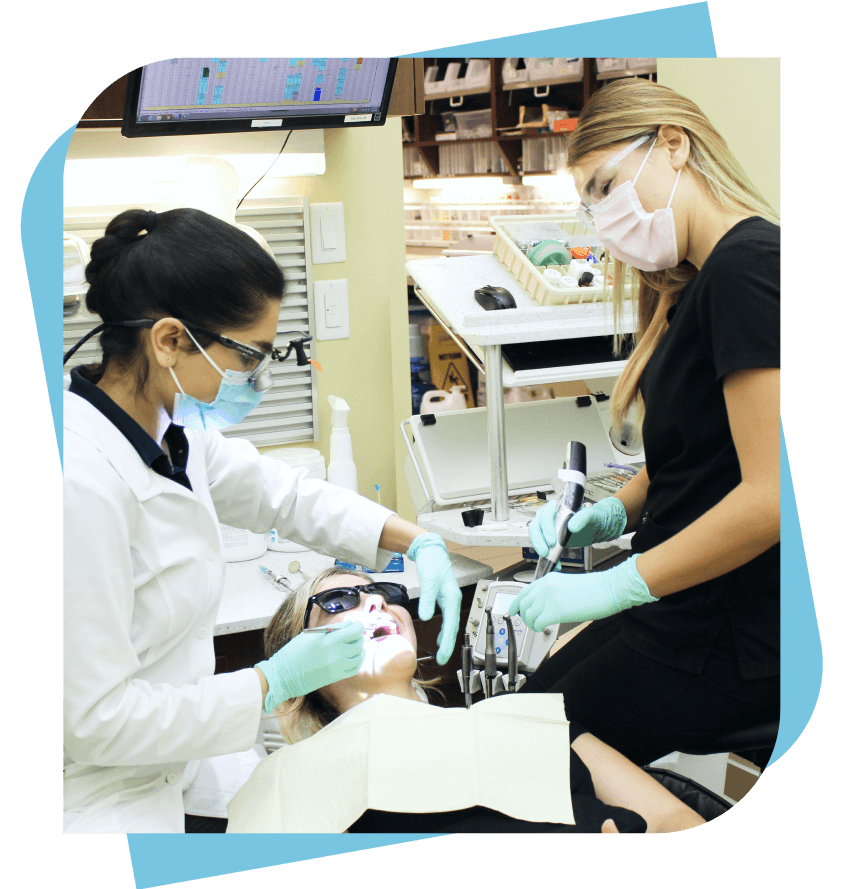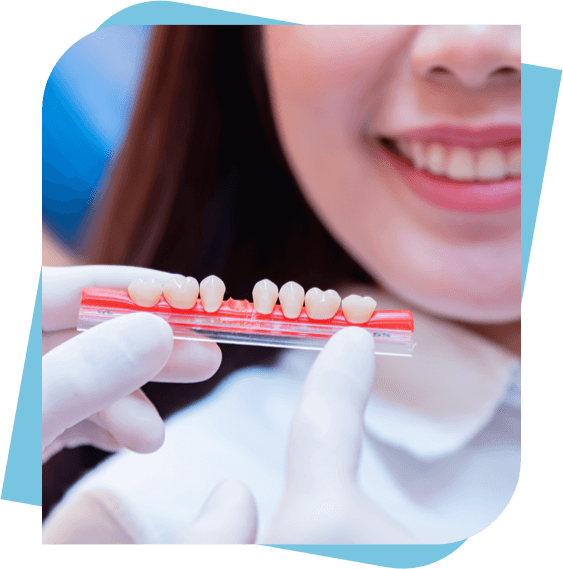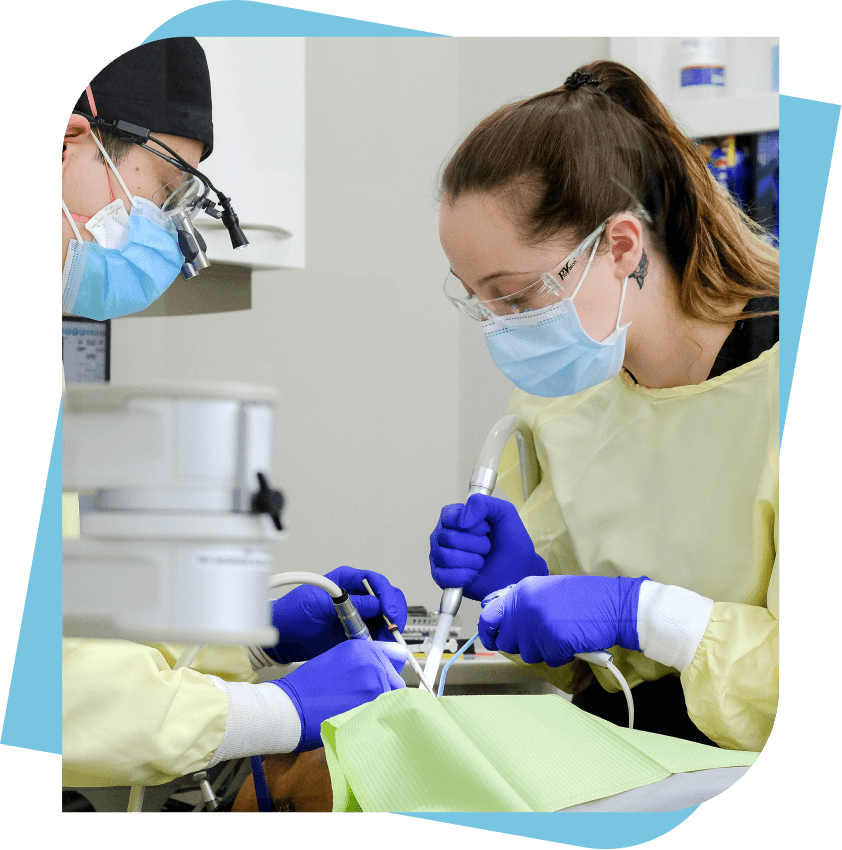All About Dental Crowns
Dental crowns are an effective form of treatment for teeth with severe decay that can't be fixed with a filling. Learn all about the types of dental crowns and how to care for them.
To Book an Appointment
What is a Dental Crown?
A dental crown is a tooth-shaped cap that is used to cover an existing tooth in order to restore its original shape, size and strength. It covers the entire visible portion of a tooth that is at and above the gum line.
What is a Dental Crown
Used For?
A dental crown is needed for a number of dental situations including:
- Protecting a tooth that has been weakened by decay from breaking.
- Holding parts of a cracked tooth together.
- Restoring a severely worn or broken tooth.
- Covering and supporting a tooth with a large filling where there isn’t much tooth matter left.
- Holding a dental bridge in place.
- Covering misshapen or discoloured teeth.
- Covering a dental implant.
- Making cosmetic modifications.


Types of Dental Crowns
Dental crowns can be made out of many different materials. Each has their own use case and set of pros and cons. Dental crowns can be made out of:
Stainless Steel
These crowns are used as a temporary measure. On permanent teeth, they are used to protect a tooth or filling while a permanent crown is made using a different material. They are also used for children’s baby teeth to protect them from decay until the tooth falls out. When used this way, stainless steel crowns are an easy and cost-effective solution that only requires a single appointment to place.
Metal Alloys
These crowns are used as a temporary measure. On permanent teeth, they are used to protect a tooth or filling while a permanent crown is made using a different material. They are also used for children’s baby teeth to protect them from decay until the tooth falls out. When used this way, stainless steel crowns are an easy and cost-effective solution that only requires a single appointment to place.
Porcelain & Metal
Porcelain crowns are one of the most common materials used for dental crowns. What makes them a great material is that they can be colour matched to adjacent teeth. This makes porcelain a great material to use for a crown on any tooth in the mouth. The porcelain is fused to metal for added strength and support. One drawback of this type of dental crown is that it can cause more wear to the opposing teeth when compared to metal or resin crowns.
All-Resin
These crowns are made entirely of resin and are less expensive than other types of crowns. However, they are not as durable and will wear down over time, making them more prone to breaking and needing replacement.
All-Ceramic or All-Porcelain
These crowns provide the best colour matching capabilities of any type of dental crown. They are best used on patients with metal allergies. They don’t have as much strength as crowns of this material with fused metal supports, so they are more prone to cracks and breaking.


Dental crowns may also be used on children
who still have baby teeth in order to:
- Save a baby tooth that can’t support a filling due to too much decay.
- Protect teeth that are high risk for tooth decay, especially
when the child doesn’t keep up with daily oral hygiene. - Decrease the need and frequency of using general anesthesia for
children who can’t fully cooperate with the requirements of proper
dental care due to age, behaviour or medical history.

Preparing a Tooth for a Dental Crown
Preparing a tooth for a dental crown will generally require two visits to a dentist. During the first visit, the dentist will examine the tooth and prepare it for a crown. This may include taking X-rays to check the roots of the tooth and surrounding bone. If there is extensive decay or risk of infection or injury to the pulp of a tooth, a root canal may first be performed.
Before a crown is made, the dentist reshapes the tooth to make room for the crown to fit in place. Once this is done, they will make an impression of the tooth. If the crown is being made of porcelain, the dentist will also match the colour of the patient’s teeth to make sure the permanent crown looks natural in the patient’s mouth. Once this is complete, the dentist will make and place a temporary crown to use while a dental lab fabricates the permanent crown.
The patient will then return for a second visit a few weeks later to have the temporary crown removed, check to ensure that the colour of the permanent crown matches the patient’s teeth and the crown fits properly. Provided it passes all of the checks, the permanent crown is cemented into place.
Caring for a Temporary
Crown
While waiting for a permanent crown, it is important to take care of the temporary crown and the underlying tooth to ensure the permanent crown can be fitted without complications. Most dentists will suggest patients take a few precautions such as:
- Avoiding sticky, chewy foods which can grab and pull the crown off.
- Chewing with the side of the mouth opposite to where the crown is located.
- Avoiding hard foods which can dislodge or break the crown.
- Sliding dental floss out from between teeth rather than lifting it out which can pull the crown off.
Caring for a Permanent
Crown
Once a permanent crown has been placed, special care is not needed. It is important to remember that while this is the case, the tooth is not protected from decay or gum disease. Good oral hygiene practices such as brushing twice and flossing once daily and rinsing with antibacterial mouthwash are important to maintain the tooth underneath the crown.






